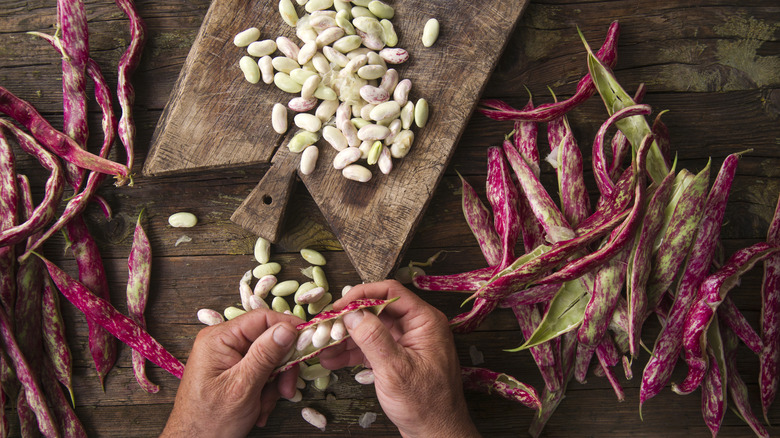How To Pick The Best Fresh Shelling Beans At The Farmers Market
When visiting your local farmers market to buy fresh shelling beans, consider a few things. First, the best time to find these versatile legumes is during their peak season, which typically falls in late summer and early fall. This is when they're at their freshest, offering the fullest flavors.
When inspecting shelling beans, start with the pods. Good quality pods are firm and plump, indicating healthy, well-developed beans inside. They should feel heavy for their size — a sign of ample moisture, which is crucial for fresh beans. While some blemishes are normal, avoid pods that are excessively spotted or look shriveled, as these are often signs of age or poor storage. The color of the pods can vary based on the bean variety but look for vibrant and consistent hues. Dull or overly light colors may indicate age or overexposure to sunlight.
When shaking the pod, the beans inside shouldn't feel loose or move around. If possible, gently open a pod to inspect the beans inside. They should be plump, occupy the pod snugly, and have a smooth, shiny surface. Shriveled or discolored beans are telltale signs that they're past their prime. The texture of the beans is also important. Fresh shelling beans should be firm with a slight give when pressed but not be so soft that they feel mushy or disintegrate. This texture indicates that they are ripe and fresh.
Proper storage and preservation of shelling beans
Once you've selected your fresh shelling beans, proper storage is key to maintaining their quality. Pack the pods in a paper bag and pop them in the fridge if you need a couple more days before using them. Alternatively, shell the beans, store them in an airtight container, and refrigerate for up to two days. During this time, they should remain firm and vibrant. If they start to get slimy or develop an off-smell, it's time to discard them.
Freezing is an excellent option for longer-term storage. To freeze shelling beans, you'll first need to blanch them. Bring a large pot of water to a boil and add the shelled beans. Boil them for two to four minutes, then immediately plunge them into ice water to stop the cooking process. This blanching step helps preserve their color, texture, and flavor by stopping any enzymatic action in the legumes. Once cooled, drain the beans and spread them on a baking sheet in a single layer. Freeze them for a few hours until solid to prevent the beans from clumping together then transfer them to a freezer-safe bag or container. Label it with the date, as frozen shelling beans maintain their quality for six to 12 months.

